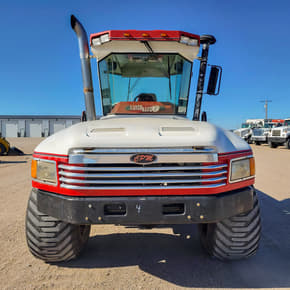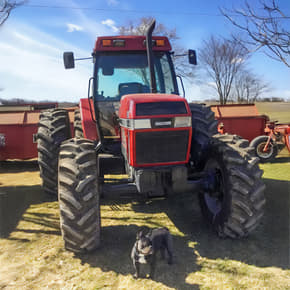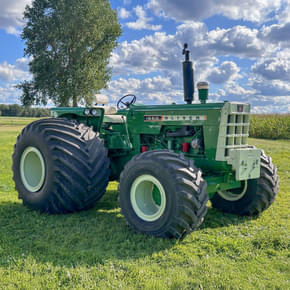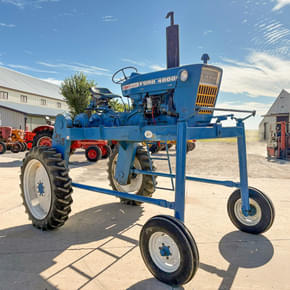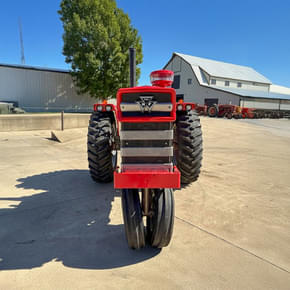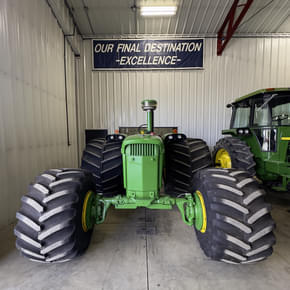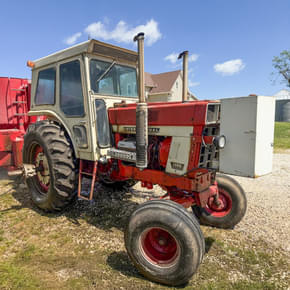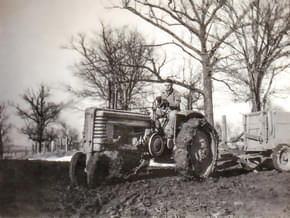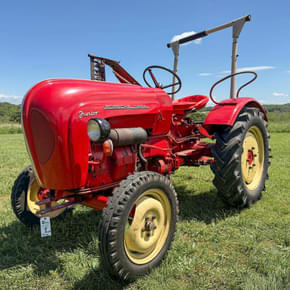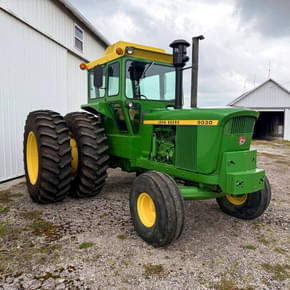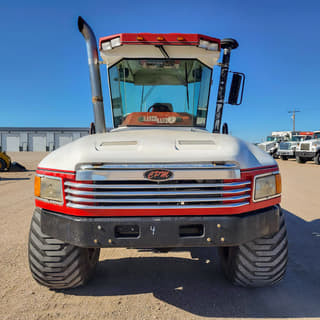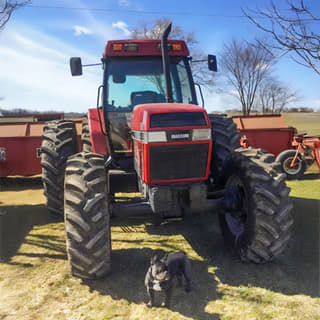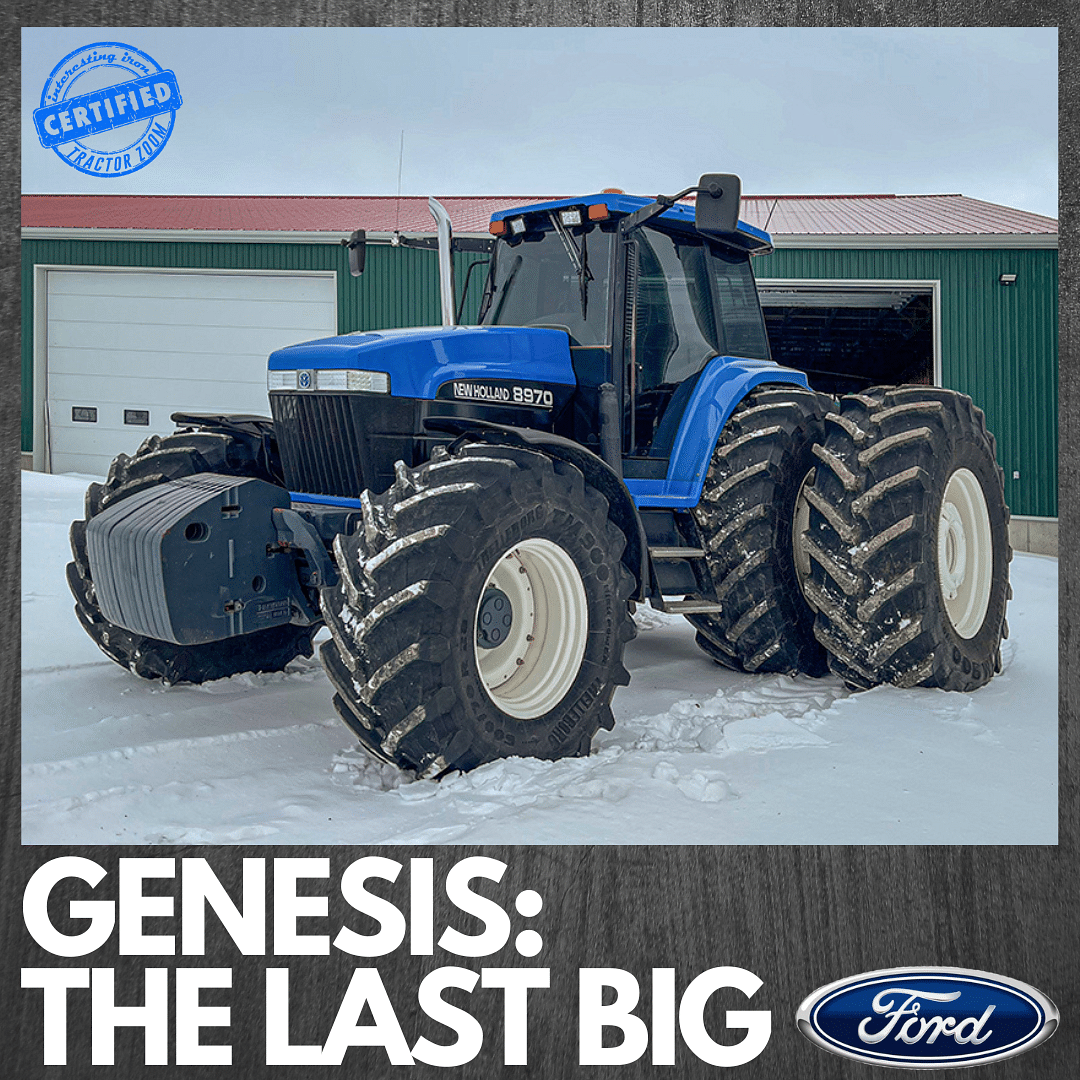
First things first: No, you can’t buy that 8970 up above. It belongs to a buddy of mine named Matt in Ontario, and he’s assured me that after losing it once, it’ll never leave the family farm again. Sharp tractor, though, that’s for sure, and I’m grateful that he sent me a few glamour shots to use in this week’s column! (More on this tractor at the end.)
I’ve been wanting to write about Genesis tractors for the longest time, but we never really had a bunch of ’em listed on Tractor Zoom until fairly recently. (As I’m writing this right now, we have eight listed. Your mileage may vary.
These machines have kind of an interesting story, too; I learned a lot while doing the leg work on this one! So, let’s get into it!
Setting the stage…
Henry Ford loved tractors, so Ford built tractors. They’d gotten to be pretty good at it over the years, too, and by the mid-60s, they’d become a global player – especially in the small tractor market.
However, as we all know, it wasn’t their strongest suit. The company’s main focus was always cars and trucks. And by the mid-80s, they were ready to be done with agriculture. It’s just my opinion here, but I think the only reason they built tractors for as long as they did was because Henry Ford II wanted to honor something that his grandfather loved. Still, the tractor business had run its course and the company started to look for the door.
Curb appeal…
When you’re selling your house, realtors always tell you that you want to make the home as attractive as possible. Furthermore, they’ll usually tell you to do whatever you can to make it appealing from the street.
Well, for Ford’s tractor business, this presented a problem. It wasn’t real profitable, and it didn’t have any curb appeal.
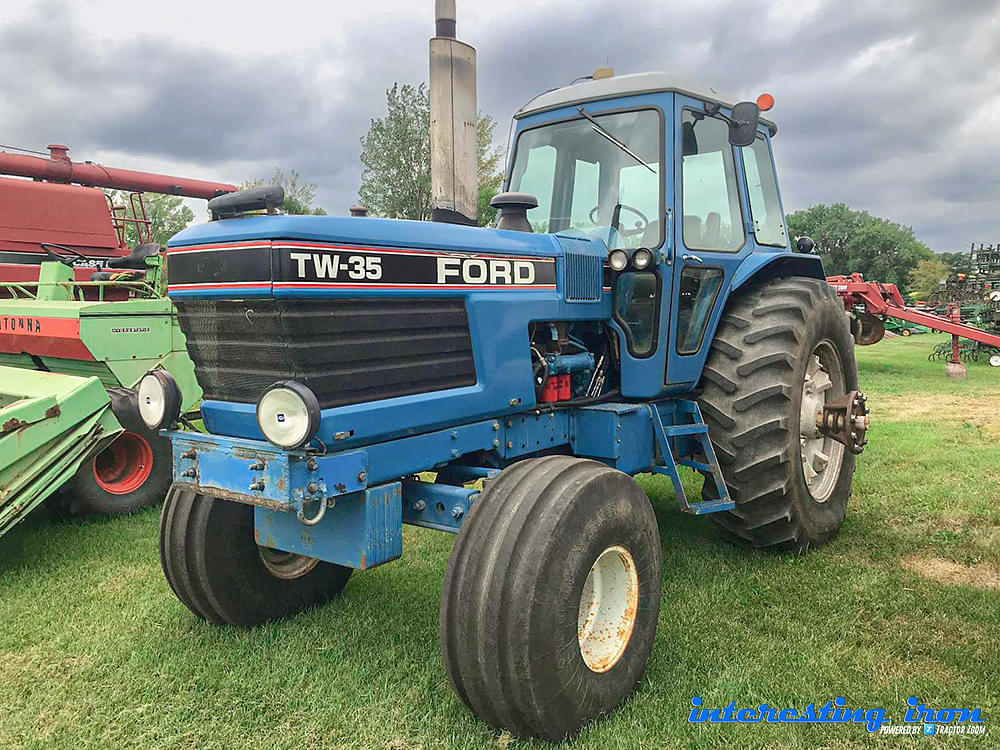
The TW line of tractors was close to 10 years old, and the 401 engine had been around since 1968! Furthermore, they didn’t have a full-blown line of ag equipment, either.
To make the business more attractive, Ford bought New Holland from Sperry in 1986 and formed Ford-New Holland. That helped quite a bit, as New Holland already had a reasonably good lineup of ag equipment (but no tractors), but it didn’t solve all the problems. The newly-formed company was good, but they still didn’t have anything in the 4WD category.
So they bought Versatile in 1988.
For years, Versatile had been building terrific articulating 4WDs on Clarence Ave. in Winnipeg. While they weren’t luxurious, the tractors were tough, reliable and had a very good reputation.
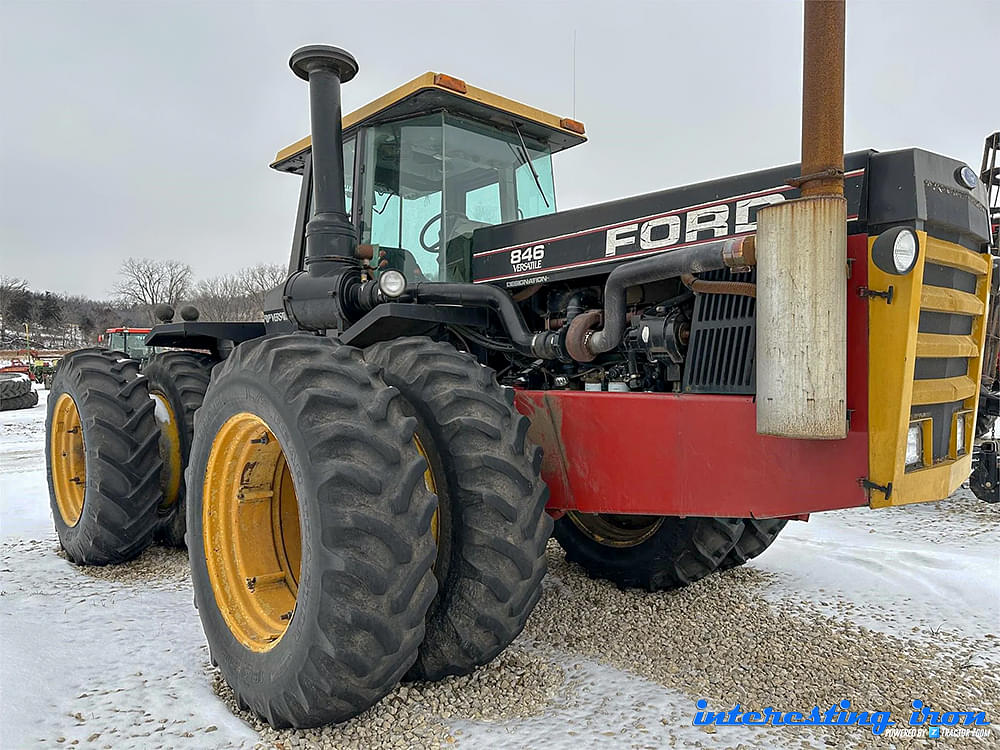
By 1988, Ford-New Holland was looking pretty good. They had a fairly full line of ag equipment and tractors in every horsepower category. At the end of the day, only had one more problem left to solve. They needed a new tractor to show prospective buyers that Ford was innovating and on the cutting edge. Furthermore, they wanted it ASAP, and they wanted to develop it on the cheap.
Enter Project 396: The Genesis
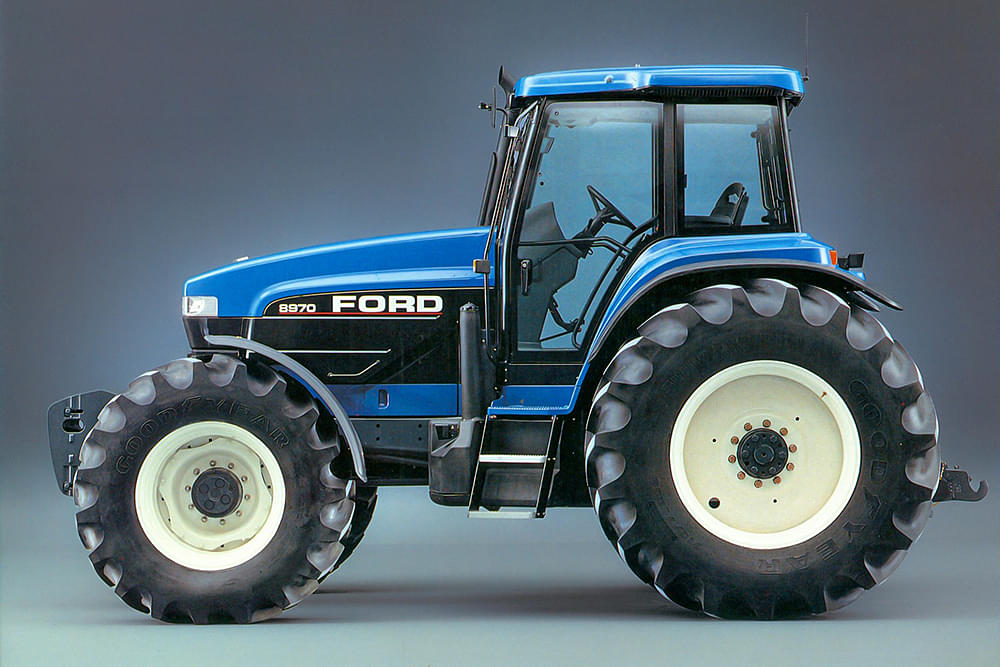
Yep, Ford-New Holland broke the cardinal rule of product development with the Genesis tractors.
They said, “We want it fast, cheap, and good.”
You NEVER ask for fast, cheap, and good! (Well, companies ask for it all the time; they rarely ever get it. Product engineers look at them and reply, “Uh…yeah. That’s not gonna happen. Pick two.”)
In this case, though…it actually worked! Development on Project 396 (P396 for short) began in 1989, and by September of 1993, they were building tractors on the Versatile assembly line in Winnipeg. Not only that, but the project was fully developed with a budget of somewhere between $32-36M! To put that number in perspective, 20(ish) years earlier, IH spent $25M just in development of the engines for the 66-Series tractors!
How’d they do it?
You’ve heard of the “trust fall,” right? The thing where you stand on a picnic table, close your eyes, fall backwards, and let your team catch you?
Well, that’s basically what Ford-New Holland’s top brass did with the P396 team. By early 1989, they’d assembled a team of the best engineers, designers, and project managers in the business. Many of them came from different business units within New Holland but had never worked together. Others like Dr. Glenn Kahle came from highly successful careers at both Deere and Case IH. Russ Strong, the lead designer for the tractor, referred to the team on multiple occasions as “The Island of Misfit Toys.”
Once the group had assembled in New Holland, PA, for the kickoff meetings, they got right to work. The goal was to build a highly reliable, high-horsepower MFWD rowcrop tractor that could take on the boxcar Magnum. Little attention was paid to Deere at the time, because they were still selling the 55-series while working on R&D for the 8000-series replacement.
Building a tractor from scratch isn’t easy, but the team learned to communicate effectively very quickly. The project managers steered and coordinated the development. More than that, though, they also insulated the team from all of the company politics and let them work! It’s utterly amazing what happens when members of a team are left alone so they can actually do the work; this was pretty much exactly what happened with P396.
At the end of the day, upper management liked the early direction, and that inspired enough confidence in P396’s team to let them keep going.
Design
One place where a company can gain (or lose) a lot of ground is in the design phase of a project. When you design a product in-house, you get to basically skip over all of the sales pitch meetings from studios. That saves tons of time – and that’s exactly what Ford-New Holland did. Russ Strong brought one concept drawing to upper management, believe it or not. They liked what they saw, and the rest of the team ran with it.
Typically during the design phase, you’ll have literally dozens of styling reviews where executives pick holes in the designer’s concept. That’s where people ask questions like, “What would it look like if the hood was 4″ wider?”
Well, every question like that has to be discussed, and it usually means more styling reviews, more drawings and more models. Now…think about all of the things that need to be conceptualized in a clean-sheet product like a tractor! It’s not just the big stuff like hoods and fenders, folks – EVERYTHING has to go through this review process! Even little things like the interior colors or what the decals look like!
See where I’m going with all this? You can eat up literally YEARS in the project when it’s a design by committee situation.
Fortunately, a guy named Jack Little (one of the original designers of the Ford Mustang) was working with Russ to provide oversight. He’d been down the road of endless meetings with other projects, and he was determined not to let it happen with P396. Upper management had a lot of respect for him, and when they asked about the project, he simply said that things were going well. If he said things were going well, that was good enough for them!
Engineering
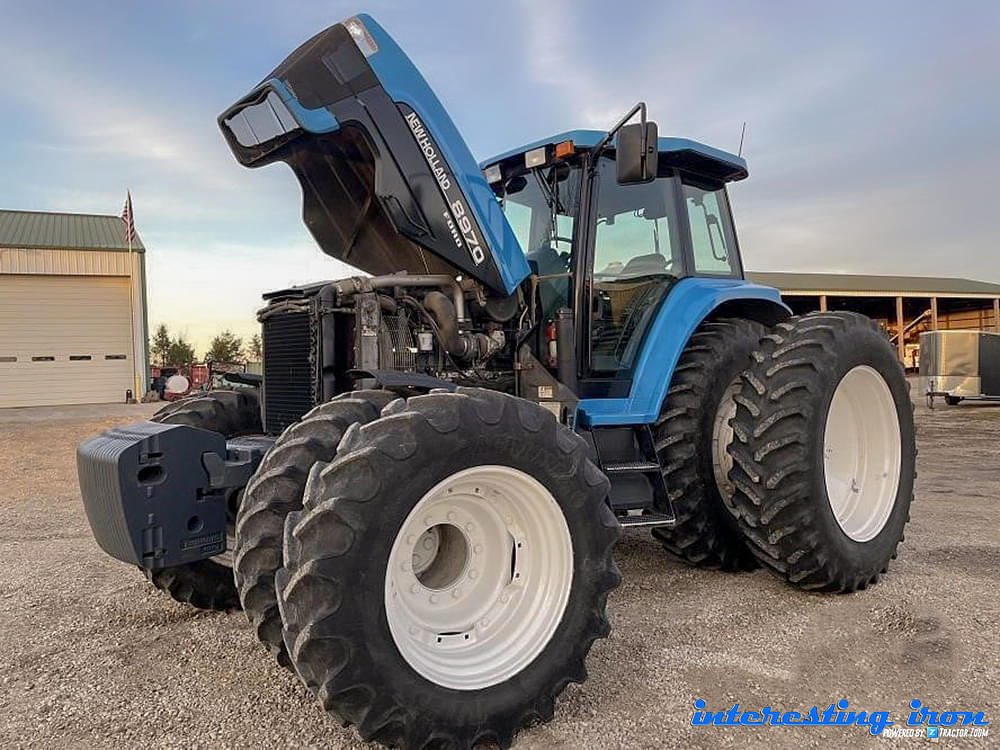
Mechanically, all four models of the Genesis tractors shared a common engine architecture under the flip-up hood; the 456 cubic inch turbo’d inline six. People normally associate that engine with the 70-series tractors, but it actually debuted about a year earlier in the largest of the PowerStar tractors – the 8240 and 8340. Regardless, in Genesis tractors, it was a torque-monster when paired with the 16-speed Funk Powershift. The 8670 was rated at 145 PTO horse, the 8770 at 160, the 8870 at 180, and the 8970 at 210. Incidentally, the Nebraska Lab only tested the 8970; it spun nearly 225 horse on the PTO. I’ve know a handful of guys who have farmed with these tractors, and they’ve all told me the same thing; they punch WAY above their weight class!
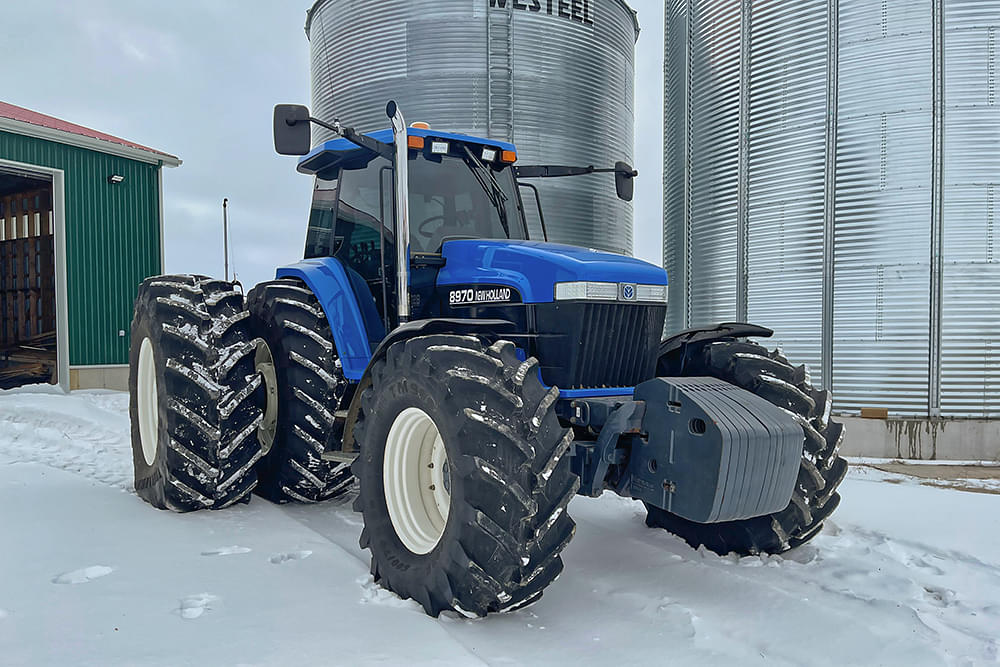
SuperSteer
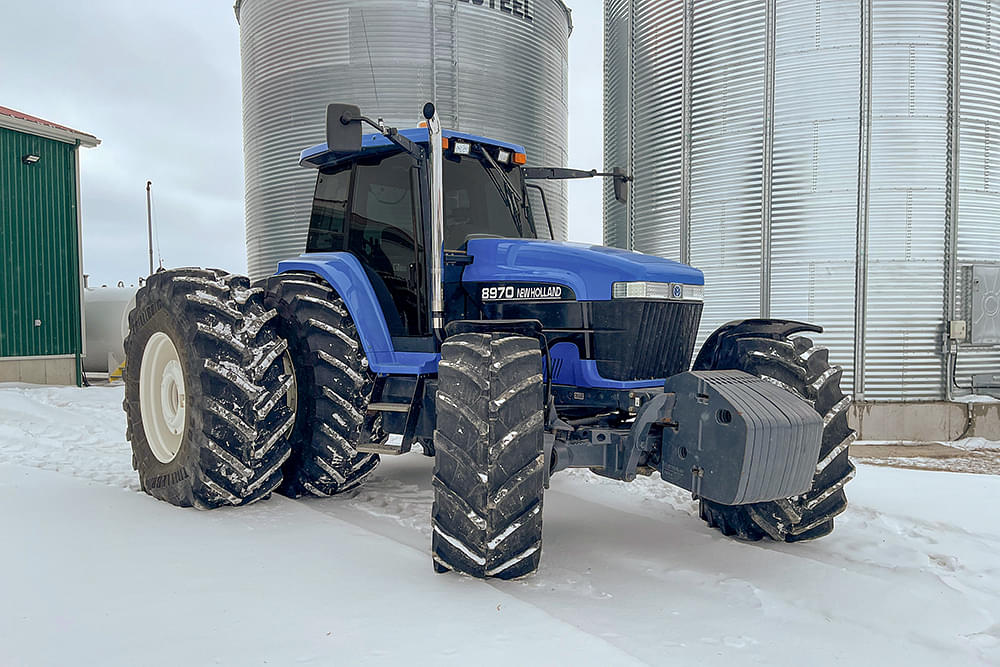
The engineer who invented the SuperSteer axle was a gentleman by the name of Joe Hurlburt. According to one Jack Braine, one of his fellow engineers, he came up with the idea while he was on vacation (which apparently speaks volumes about how time away can clear your head)! Using a heavy duty ball and socket joint in conjunction with a pivot point and tie rods, it allowed the inside wheel to shift outward to clear the tractor. The advertising boasted that the $2000 SuperSteer MFWD option would allow for 40% tighter turns than anything else on the market. Over the course of a year, that could end up saving a fair bit of fuel!
Personally, I think the SuperSteer MFWD axle was the biggest development in the Genesis tractors. Initially, it was a risky endeavor; new features are often fraught with errors (mechanical or user-caused), but there again, Ford-New Holland’s top brass trusted their team to make the right call! It proved to pretty popular, too, because it continued on into the TG-series after the Case-New Holland merger!
The cab & the Sidewinder Console
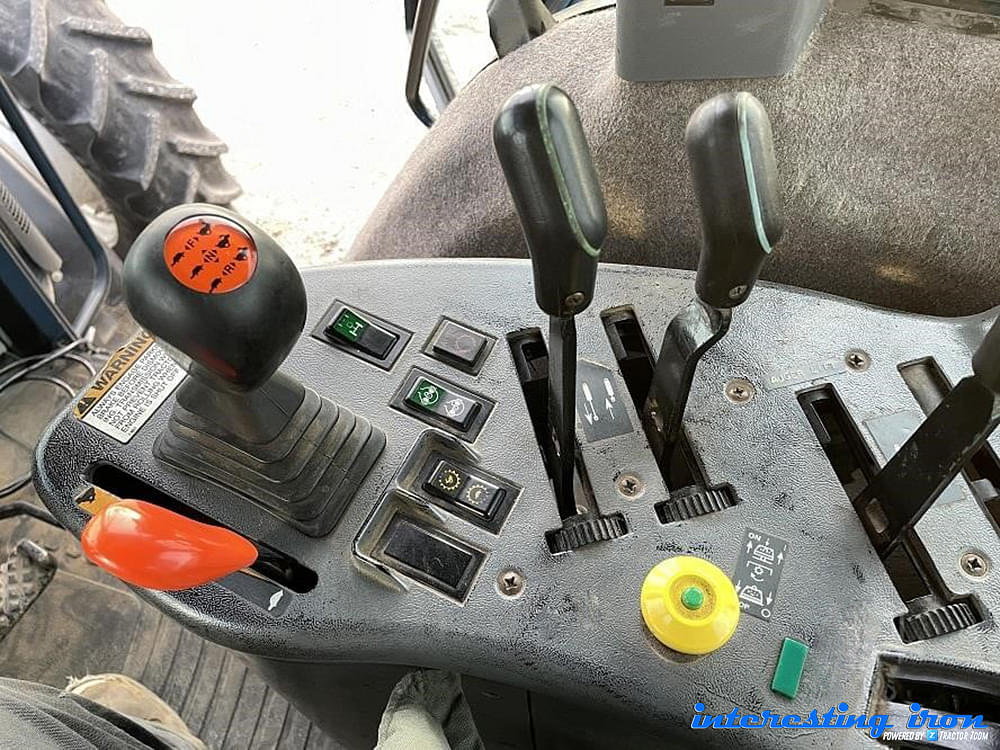
When it came to the cab, operator comfort, durability, and efficiency were the name of the game. From the choice of materials to the position of the Sidewinder console, everything focused on operator comfort and efficiency. The arrangement of the joystick, levers, and switches were intentionally designed to fall where the operator’s right hand would normally be. Once you spent a little time in the cab, your muscle memory took over as far as learning where the controls were. According to my buddy Matt, the learning curve was very quick. Furthermore, the seats were very well designed. They allowed the operator to easily look over their shoulder without the need to reposition their hands. It’s truly possible to run this machine one handed, so to speak.
Another focus was cab materials. The seat covers, for instance? No seams on them. Not anywhere. The plastics in the cab are all 6mm thick ABS plastic. They wear like iron. I’ve done some looking in our TZ Pro database, and I don’t recall ever seeing a console that was cracked. Not even in high-hour dairy farm tractors! (Don’t get me wrong, I’m sure there’s somebody who’s wrecked a console and trashed a seat. However, I feel like maybe they had to work at it a little harder!)
MegaFlow Hydraulics
One of the bigger (some say the biggest) developments introduced in the Genesis tractors was the optional MegaFlow hydraulics system. Capable of delivering up to 55 GPM, the MegaFlow system was the highest available at the time. It used two pumps, which prevented overworking the system. You could buy a Genesis optioned three ways; standard, MegaFlow-ready, and with the full MegaFlow system. Overall, the system worked very well, and supported running larger implements than ever before!
Sales
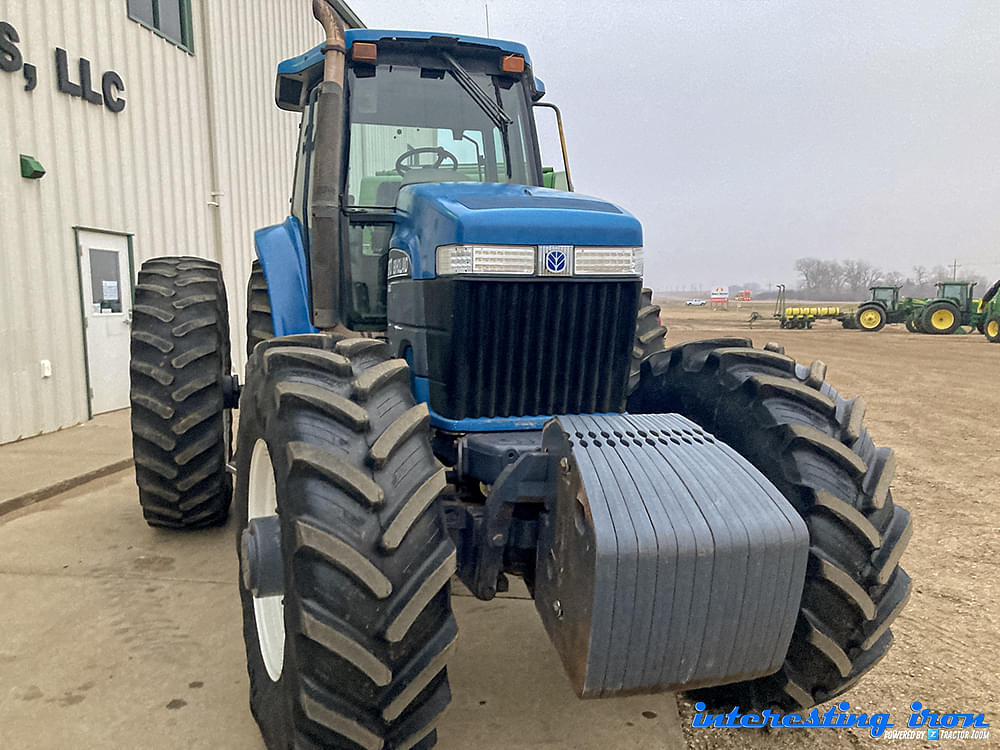
There’s two aspects to this section; the corporate side, and the tractors themselves.
The Corporate Side
Remember when I said that Ford intended to get OUT of the tractor business, but they needed curb appeal to make the company attractive for a buyout? Well, the plan worked. The Genesis tractors garnered a lot of attention from Fiat in Italy. They’d never been able to crack the North American market with any of their tractors because they were too small for row crop farming. When the prototype tractors went to the field for testing, Fiat made sure that one of the testing locations was in Modena, Italy. The tractors really impressed their engineers and business people!
At the end of the day, Fiat came to the table mainly because of the Genesis project. It offered them a ready-made way to make a big splash with American farmers with a cutting-edge tractor that they could market elsewhere too. Ultimately, they ended up buying the company and became known as New Holland.
Genesis Sales
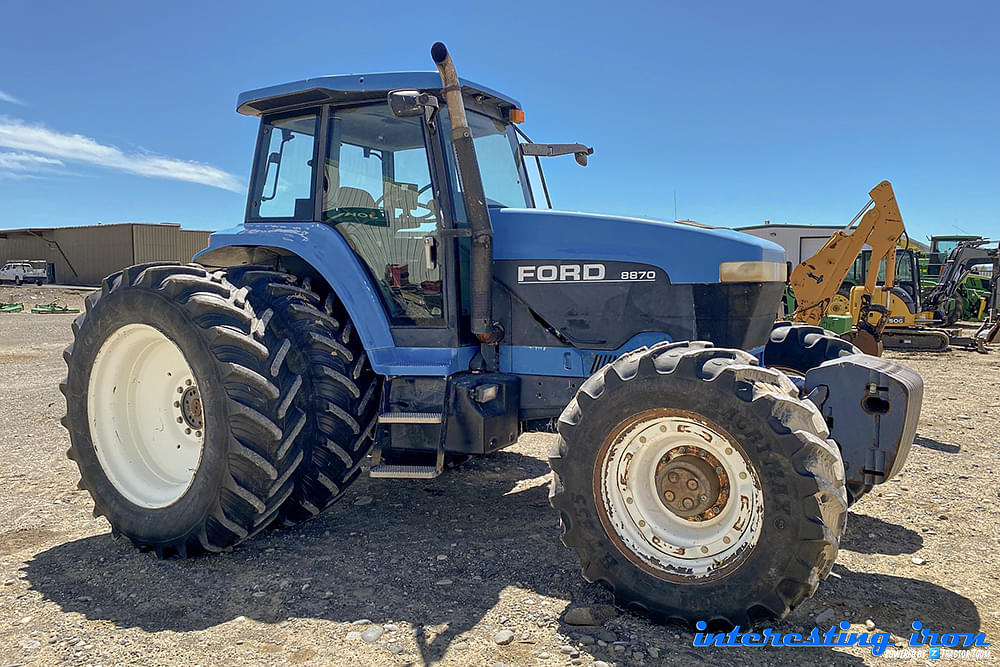
The Genesis line sold VERY well. They were affordably priced; SuperSteer 8670 MFWDs listed for under $85K in 1993! New Holland’s build quality and feature set impressed a lot of John Deere and Case IH customers. I don’t think the Genesis tractors made a huge dent in red and green sales per se. However, farmers definitely gave them a second look.
New Holland didn’t waste time in marketing the tractors on the global ag market, either. Through the 15-year production run, Genesis tractors wore at least seven different colors; Ford blue, New Holland blue, Fiat terra cotta, Landini blue, Buhler-Versatile red, Challenger yellow, and Claas green and white! (Challenger and Claas could be up for debate, depending on how much of a purist you are. They shared a few driveline parts, cabs, and mildly-modified body panels, but used different engines.)
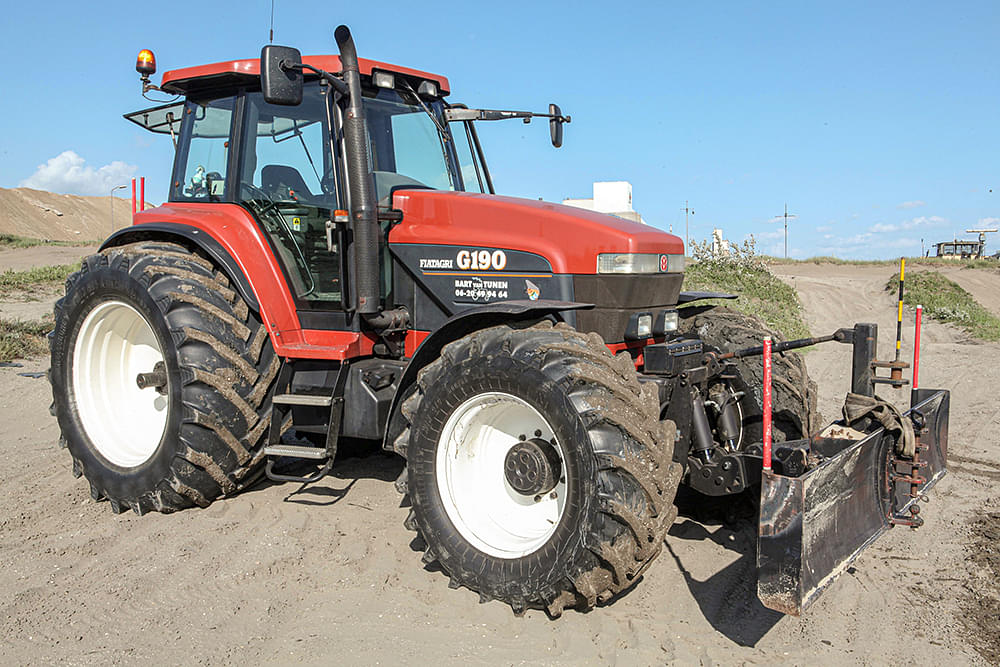
Changing hands…again.
In 1999 when New Holland merged with Case IH, anti-trust laws forced the sale of the 4WD business as well as the Genesis line. So, they sold Versatile off to Buhler, which created Buhler-Versatile. At the end of the day, nothing really changed for the first year or two; they still branded the familiar blue tractors as New Holland models.
By 2004, though, Buhler-Versatile had phased in their own color change. Basically, nothing really changed as far as production went other than a different paint job.
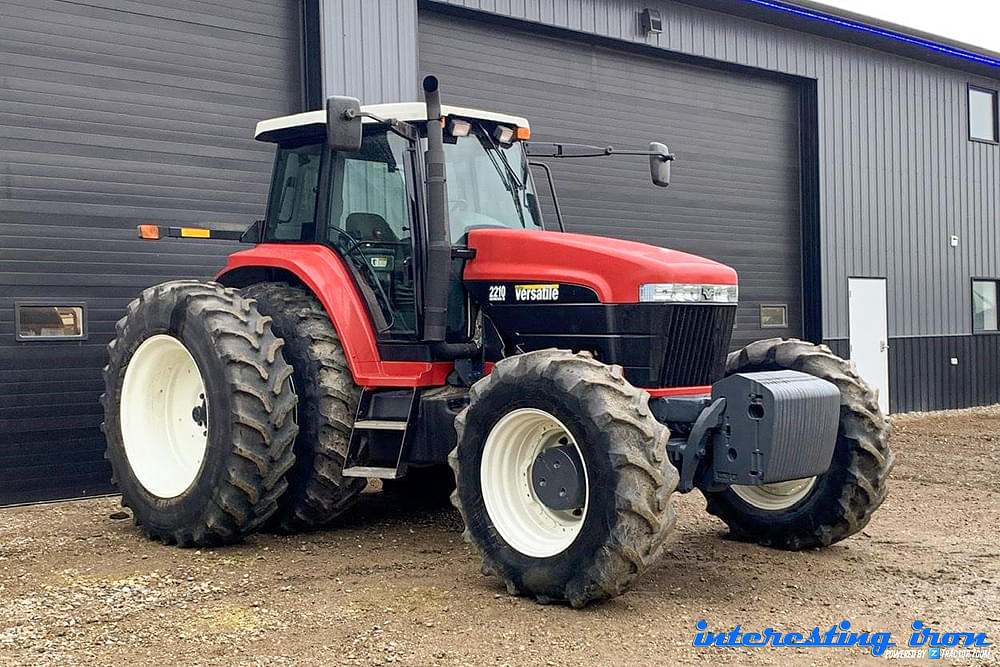
For the final year of production (2008), Buhler-Versatile changed up the body styling for the first time in the history of the Genesis tractors. The guts didn’t change, but the sheet metal sure did! It was a preview of what was to come when Buhler sold Versatile to Rostselmash, a Russian firm. Rostselmash wouldn’t look good on a the hood of a tractor sold in North America. So, the familiar Versatile nameplated returned (to be followed a year or two later by the classic paint scheme). As far as I’m aware, this sheet metal only wore the Buhler-Versatile name for 2008 while they used up their remaining Genesis blocks. After that, Versatile would change over to Cummins power.
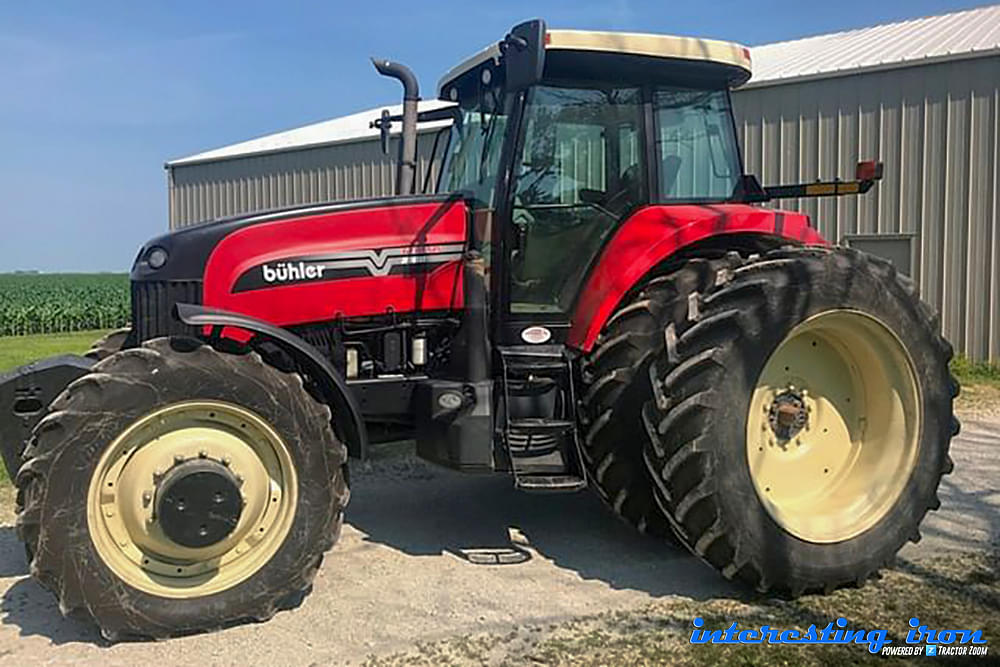
Wrapping up.
So there you have it, the story of Ford’s last big tractor. Save for the 2/8/9N tractors from the 40s, I think the Genesis tractors were probably among the most successful Fords of all time. They just did it under a bunch of different nameplates!
Why was it a success? Personally, I think it was because Ford’s management assembled a uniquely talented development team, laid out very clear objectives, and then got out of the way. They knew that the easiest way to screw up a project was to over-manage it, so they made a conscious decision not to do it.
In response, the development team really rose to meet the challenge, and built one heck of a stout tractor that’s still earning its keep all over the planet!
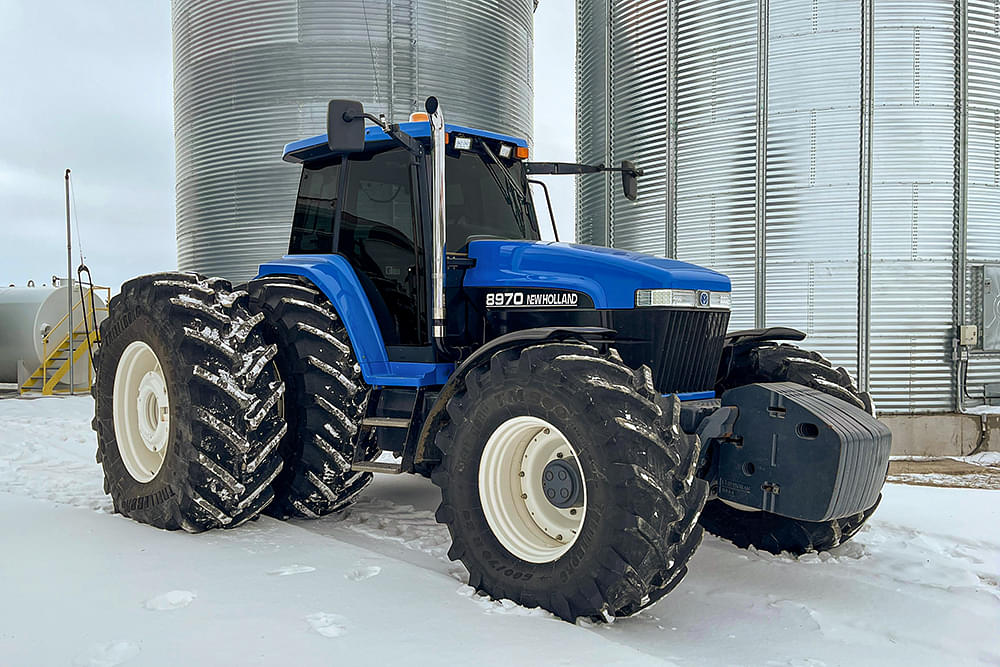
About Matt’s tractor…
I promised I’d tell you the story of Matt’s tractor at the end, so here it is.
The Dirksen family has been blue basically since they came to Canada from Holland in the late 70s. Anyway, Matt’s dad bought this tractor brand new from the dealer in 1998. They put 2400 mostly trouble-free hours on the tractor over the next six years. The one and only thing they didn’t like about the tractor was its road manners. It had plenty of power, but the transmission topped out at about 18 mph. They have a few farms that are far enough away that the speed became problematic. They were left with no choice but to trade it in.
According to Matt, his dad kicked himself for getting rid of it pretty much ever since it left the farm.
They kept tabs on the tractor, though. As it turned out, it was sold to a fairly local farmer who they were acquainted with, and that guy took really good care of it for the next 13 years. The way Matt tells it, they’d stop and chat with him every now and again, and Dad would usually ask if he was ready to sell it back to him yet.
It turns out that in 2019, Dad finally got the chance to get it back. It was in perfect condition, and the farmer had only put about 3500 hours on it during the years he had it. The day it came back to the farm, Matt and his dad made a promise that the 8970 wouldn’t ever leave again. Matt readily admits that it’s something of a princess on their farm. She doesn’t get used too frequently these days. She pulls a manure tank once in a while, and a grain cart to the close fields in the fall.
Oh, and thanks to some pump work, tuning, and a bigger windmill under the hood, she has one more job. Every September, they weight her up to about 28,000 pounds and go to the county fair to bruise some egos.
I can’t think of a better retirement plan!
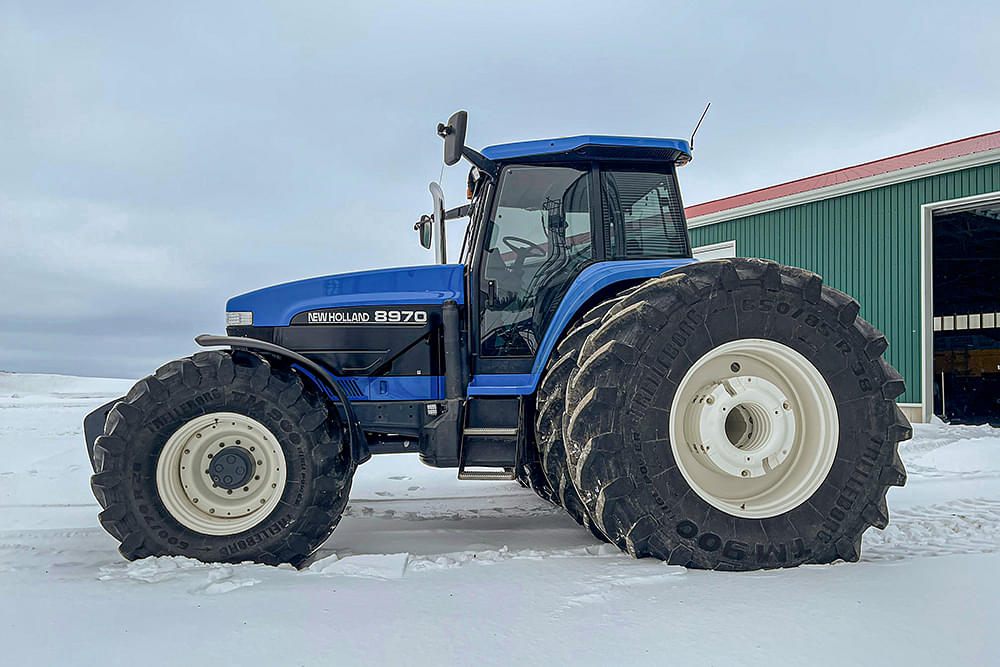
Shop Genesis tractors here.
A final closing thought: Y’know, we live in a really unique day and age where the intersection of social media and real life experience can capture some amazing history. Such was the case when I was doing the homework on this article. I discovered a UK-based Facebook group dedicated to the 70-series Genesis tractors. I’m tellin’ you, that group is chock-full of farmers from around the globe who love these tractors. What’s even more amazing, though? Several of the gentlemen and women who were instrumental in this tractor’s development hang out there. Russ Strong, the design lead, was one of them. Jack Braine is another. The stories they shared about how P396 came together were crucial to the way this story came together. The deep dive answers to the questions that farmers asked were outstanding.
At the end of the day, we NEED to capture this history – not only so that we can learn from it, but so we can also celebrate their achievements. I’m firmly convinced that the team that Ford-New Holland assembled for P396 was literally a one-time deal. I don’t think a company could put a group of – as Russ termed it – “misfits” with the same balance of real-world experience and professional training that this team had in 2023. That was the beauty of this team; it happened once, and it set a standard for what would come in the future. That was the reason for the name “Genesis.” It was the shape of things to come!
I’m currently attempting to connect with Russ and Jack. I’d really love to meet them both and dig deeper into the history of the P396 project team and why they think it was so successful!

